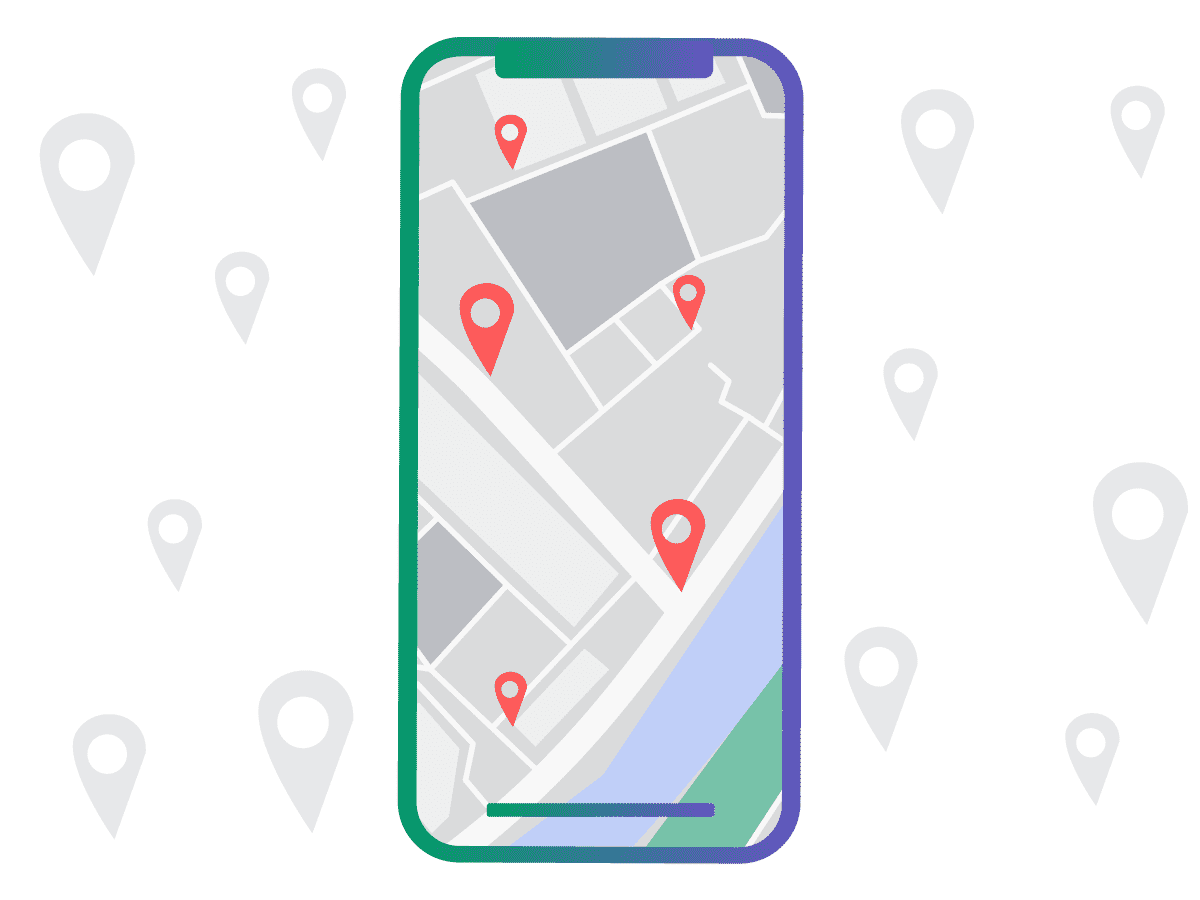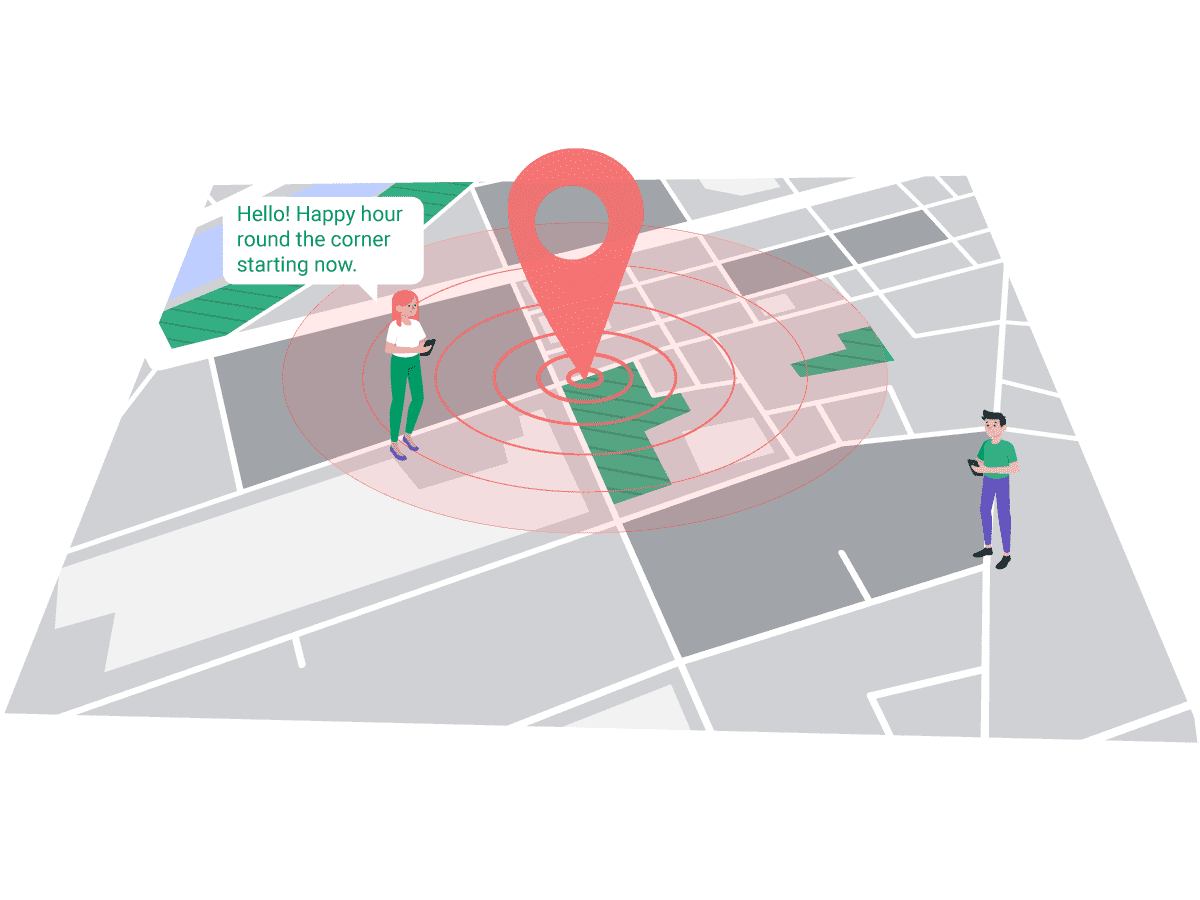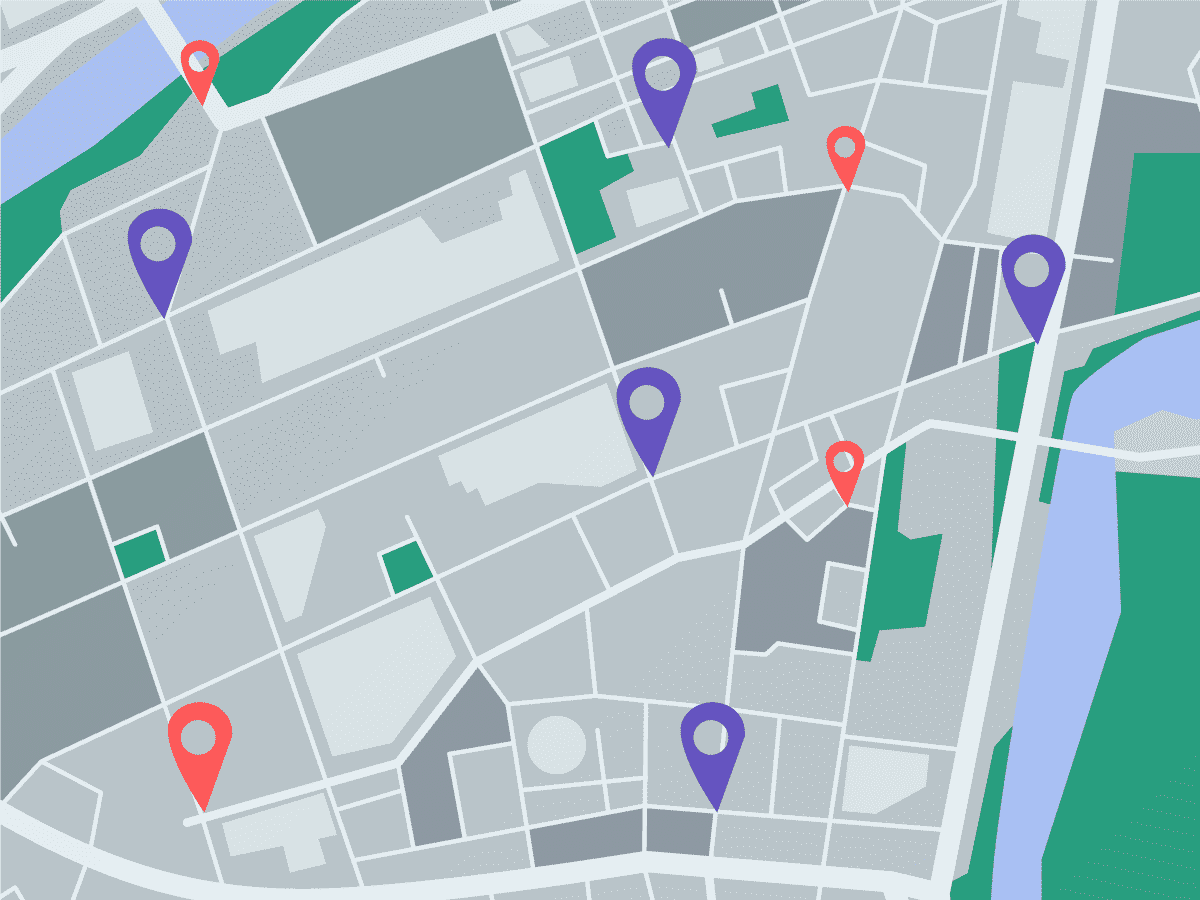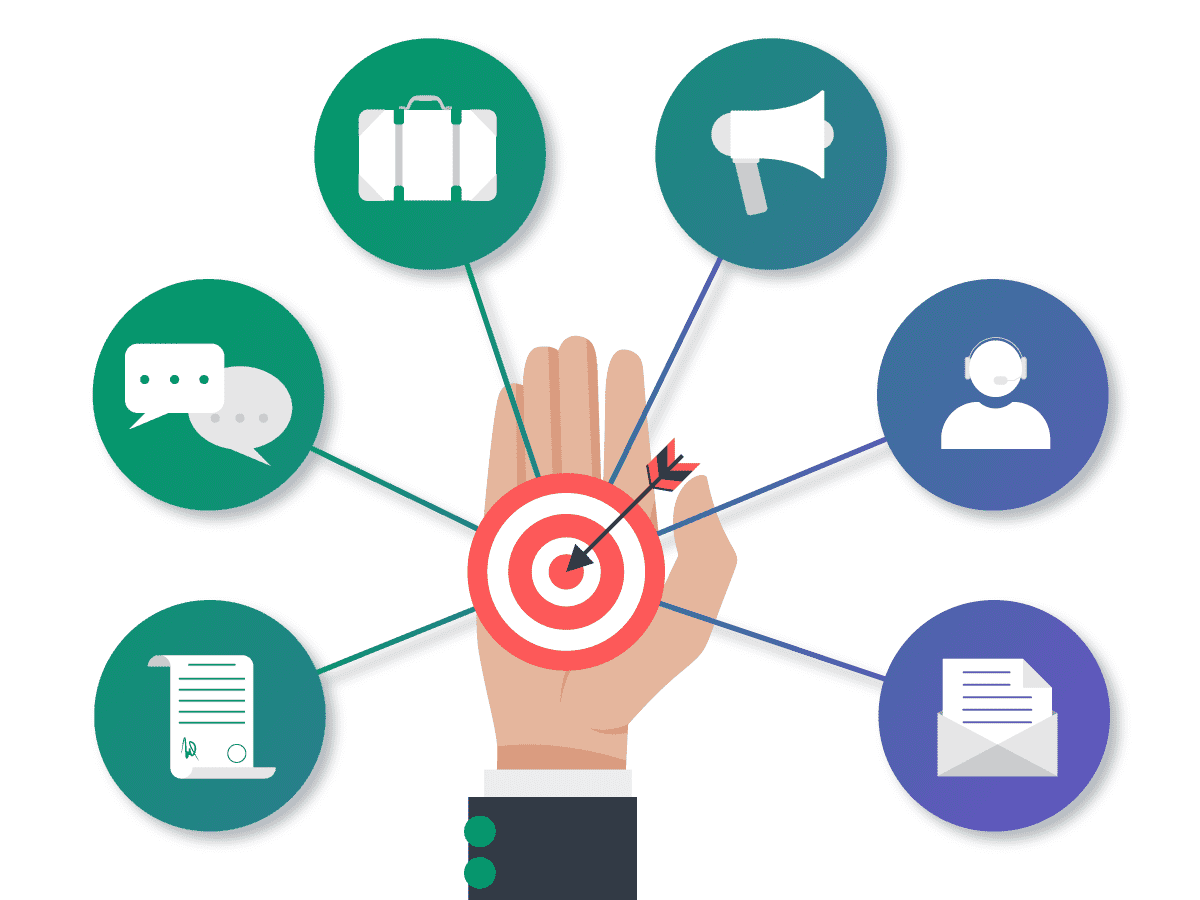With the continuing rise of users relying on their mobile phones for so much more than just making a phone call, it is prudent for companies to bring their products and services to their buyers. And with geolocation technology, companies can do just that.
As of 2015, 95 percent of mobile users in the US aged 18-29 have been using location-based service apps1. Taking smartphone penetration rates into account (69.6% in the U.S. in 20182), developing an application that uses geolocation can expose your business to over 200 million potential users in the U.S. alone.
But how do you choose between geotargeting, geofencing, or beacons? Even these are just a handful of the possibilities currently on the market.
First, let’s take a closer look at location-based services (LBS) versus proximity marketing.

Location-based Services
LBS communicates with user’s devices within a set range. This can be any sort of shape on a map, and cover either small or large distances; it generally focuses on any device that meets the simple requirements of having the application it’s interfaced with installed.
This type of technology is generally tied to GPS or cell tower triangulation. It is less discriminatory between audiences, and can be beneficial for catching a larger swath, especially if you’re uncertain where your audience might end up. LBS is less focused on where a potential customer is at any given time, and is more about where they have been.
However, LBS can also be targeted to specific zip codes or other address-detailed areas, if a company is looking to target a specific county, town, or larger region.
Geofencing
One example of LBS is geofencing, which has a range of over 50,000 meters and beyond. Geofencing is the placement of a virtual boundary on a digital map; this boundary creates a conversion zone that tracks the entrances and exits of specifically identified mobile devices, usually ones with the organization’s application installed on it.
Whenever a user’s device enters or exits the conversion zone, the geofence triggers a predetermined action.This action can be a notification, text message, or alert. These are just a few examples. Many retail companies use this technology to entice users into brick and mortar locations, but it’s also highly useful for tracking shoppers’ movements.

One potential use case is geofencing various locations at a live show to see what fans might enjoy the most at an event: concessions, merch, networking opportunities, etc.
Another example is reaching bank users at crucial moments to potentially convert them to a bonus program campaign or follow up on concerns about potential fraudulent use.
Geotargeting
Geotargeting is very similar to geofencing, but with a more focused application. Rather than simply outlining a general area around one location, geotargeting, as the name implies, targets areas at the address level. It also can relate more to digital advertisements seen online, as once a geofence collects a mobile devices’ identification, organizations can follow users across other verticals.
Such information can assist in retargeting consumers days or weeks later, as geotargeting retains user information for between 30-60 days. By keeping your company at the forefront of a buyer’s mind, when a potential need strikes, they’ll think of you first.

Examples of geotargeting in the real world involve advertisements following up on a user’s recent visit to a banking location, thanking them for their visit and asking for their feedback via a survey. It’s also possible to use geofences and geotargeting to lure potential customers away from competitors by setting such a virtual fence up around a location so that it messages a target user’s devices as they enter or leave.
Locations that do not pertain to a company’s target demographic can also be excluded from a geotargeting campaign; for example, if your company does not yet sell overseas and instead focuses on the U.S., Europe and other countries can be excluded. This prevents wasted funds and impressions from being sent to those who won’t pay any attention.
Proximity Marketing
In contrast to LBS, proximity marketing focuses on users in a smaller space. This could be inside a store, venue, or other building where the targeted group might be in a room or aisle. Proximity marketing reaches customers via accurate position rather than a general area.
Proximity marketing has been used for years in the form of banners and other physical signage. But there are new, advanced technologies that bring proximity marketing into the digital era; technologies such as Bluetooth, NFC, RFID, and Wi-Fi.
Such technology is good for reaching potential customers within 100 meters.
Beacons
Beacons are the predecessor to technology like geofencing and geotargeting. They are generally used solely for proximity marketing, and with good results. According to a 2017 Proxbook’s Q1 Report, 91% of marketers still favored beacons over other marketing technology.
![]()
Using either Wi-Fi or Bluetooth, beacons connect to a mobile device with more accuracy. They can be the last push needed to make a purchase by notifying a user that a nearby item, which they may have been considering, is part of a BOGO sale.
They can also be used to help shoppers or users navigate around large areas, impart important product or service information, and generally implemented to assist customers proactively.
Which one should you use?
Deciding on one technology is tough; even though budget might have the last say, organizations interested in geolocation technology should consider the why attached to the need they’re trying to meet. Are you targeting a specific area? Do you know who your audience is? What sort of information are you looking to collect?
General advice says to use two or more geolocation technologies in tandem in order to get the most bang for your buck. Placing a geofence around a brick and mortar location to see who’s passing by is effective, but then implementing beacons inside the door for assistance or directions adds a special touch that can put your brand above others when it comes to convenience and customer personalization.

And personalization is key in this era; 94% of marketing professionals across multiple industries who responded to a 2014 Forrester Research Inc. survey said personalization was either “important,” “very important,” or “extremely important” when it came to meeting current marketing objectives.
Nearly three-fourths of online consumers become increasingly frustrated with websites and their content when they feel that content does not reflect their interests, according to a national poll conducted by Janrain & Harris Interactive in 2013.
By focusing in on where your potential customers will be and showing them what’s not only locally available to them but is also related to a current or past interest, you have a stronger chance of increasing and maintaining sales, not to mention increasing and retaining brand loyalty.
Reaching customers in real time can set you above the competition.
Softjourn has over a decade of experience in mobile app development; if you’re ready to talk about how adding geolocation services to your existing application, or want to develop an app to start tapping into the benefits of geolocation marketing, contact us today!







